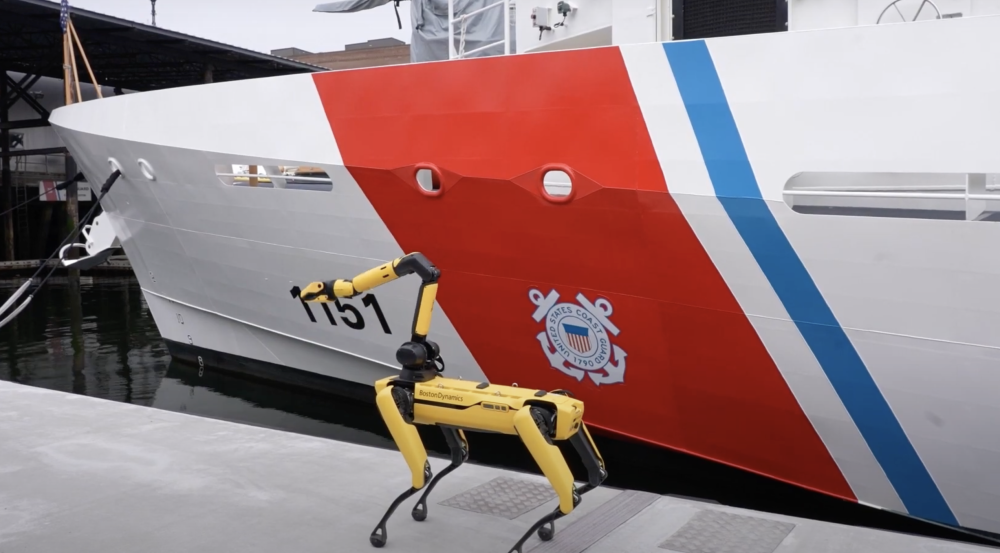An adapted robot assists with situational awareness

Artificial Intelligence, as applied to the field of robotic autonomy, is an essential area of growth for national security. With their ability to enhance situational awareness and minimize risk to human lives, autonomous systems can reduce time and increase flexibility for response operations. The AI Software Architectures and Algorithms Group, within the Homeland Protection and Air Traffic Control Division, recognizes the importance of developing algorithms for autonomous systems performing reconnaissance and rescue operations.
One autonomous system that holds promise for these types of operations is Boston Dynamics' quadrupedal "Spot" robot. Unlike quadcopters, which are today's most predominant platform for robotic autonomy, Spot is able to navigate complex, GPS-denied terrestrial environments. These capabilities could enable a robot to survey narrow gangways deep within a ship’s hold, which might pose chemical, biological, radiological and nuclear risks, or perform post-disaster urban search-and-rescue tasks.
Dan Griffith, a researcher in the AI Software Architectures and Algorithms Group, is working on using Laboratory-made algorithms to collect field data and identify spaces where Spot can improve missions. For instance, using these algorithms, Spot would be able to scout a dangerous area before military personnel enter and check for hazards.
Griffith is part of a team that has been walking the robot around on Hanscom Air Force Base and in Laboratory spaces to gain perspective into its sensing capabilities and terrain restrictions. The team is using classical perception, artificial intelligence, and machine learning to modify Spot to be aware of its surroundings and create a 3D model of an area. "For us, where machine learning first comes in is semantic segmentation, which involves using a neural network model to assign labels or categories to every pixel and corresponding object in the robot’s imagery," says Griffith.
Semantic modeling would allow Spot to then produce a 3D semantic mesh of an area and label buildings, walkways, and other high-level features. Once it has been trained to know where certain things are most likely to be, the robot will be an effective tool to locate specific assets or dangers. For example, if a team sent Spot in to a building to find a gas leak, it might start by searching for likely areas such as a kitchen or utility room in a basement.
In July, Laboratory staff brought Spot on board a 45-foot Coast Guard response boat to test its sea legs. As boats can be small and cramped, using a small robot to scout around the vessel can reduce risk factors associated with sending personnel in to perform the same duty. "United States Coast Guard members often have to go into holds that could contain toxic fumes or other chemical-biological hazards," says Amna Greaves, the group's assistant leader. "There is also the possibility of hostility from crews. Having a companion that can sense chemical, biological, radiological, and nuclear threats by carrying specialized sensors could reduce risk to responders."
According to the research team, the development of AI for autonomy should be viewed as an imperative endeavor for national security. The AI Software Architectures and Algorithms group is engaged in the exploration of cutting-edge research and development to explore the potential of explainable AI, perception methods such as semantic segmentation, applications of virtual and augmented reality for robot learning, and other innovative concepts.
"This type of research has the potential to reshape the landscape of defense operations as the world continues to evolve technologically and security challenges become more complex," Greaves says.